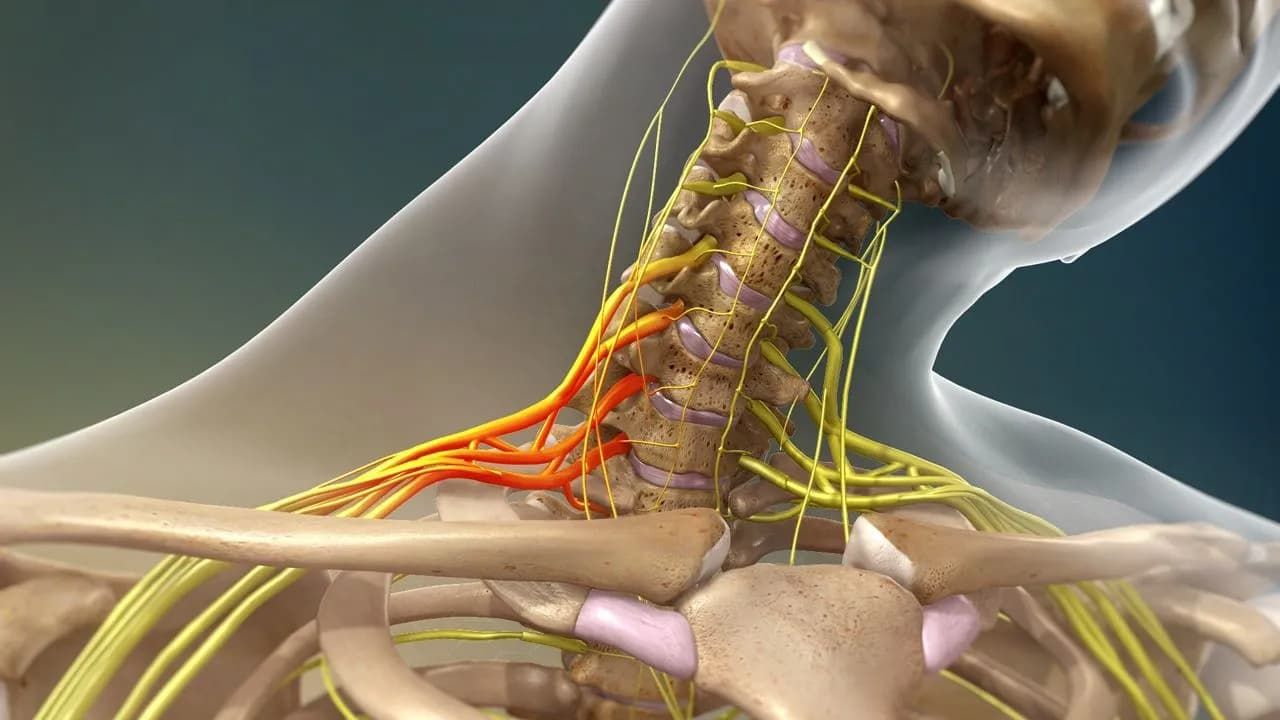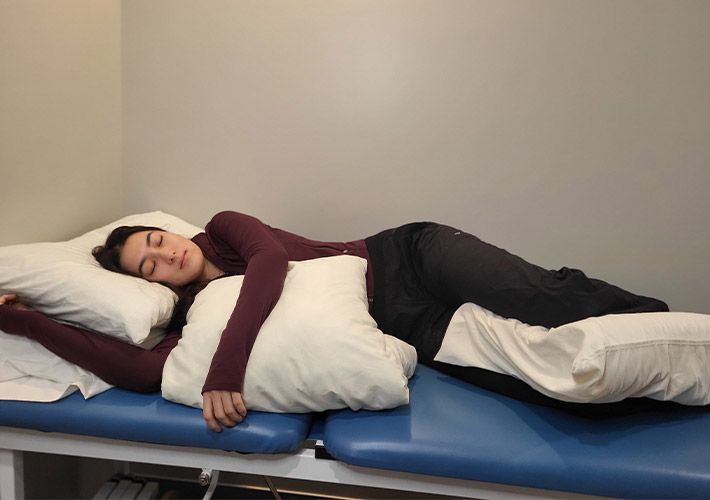10 Common Causes of Neck Pain and How to Address Them

Neck pain is a prevalent issue that affects a significant portion of the population, leading to discomfort and reduced quality of life. Understanding the various causes of neck pain can help individuals take proactive steps toward alleviating their discomfort. At Peak Performance Chiropractic & Wellness, we are committed to providing comprehensive care to address neck pain issues, ensuring our patients can enjoy a life free from discomfort. Here, we explore ten common causes of neck pain and the methods we employ to address them effectively.
1. Poor Posture
In today's digital age, poor posture is one of the leading contributors to neck pain. Many individuals spend hours hunched over their computers or looking down at their smartphones. This position places a strain on the neck muscles and can lead to chronic pain. To combat this, it’s essential to maintain an ergonomic workspace. Regular breaks to stretch and adjust your posture can significantly alleviate neck strain. Our chiropractic team can also provide personalized adjustments and exercises to improve posture and reduce pain.
2. Muscle Strain
Muscle strain often results from overexertion during physical activities or even sleeping in an awkward position. This strain can cause immediate pain and stiffness. Stretching before and after physical activity and ensuring a supportive sleeping arrangement can help mitigate these strains. Our licensed massage therapists at Peak Performance Chiropractic offer various techniques, including deep tissue and craniosacral therapy, to relieve muscle tension effectively.
3. Whiplash Injuries
Whiplash is a common injury resulting from car accidents or sudden impacts. It occurs when the head is jerked forward and then backward, causing strain on the neck muscles and ligaments. Symptoms may include pain, stiffness, and headaches. If you’ve experienced whiplash, it’s essential to seek professional care. Our chiropractic team specializes in comprehensive treatment plans designed to restore mobility and reduce pain associated with whiplash injuries.
4. Degenerative Disc Disease
As we age, the spinal discs can lose hydration and elasticity, leading to degenerative disc disease. This condition can cause neck pain and may radiate to the arms. Treatment often includes chiropractic adjustments, physical therapy, and specific exercises aimed at strengthening the neck and back muscles. Our team is equipped to create individualized treatment plans that focus on enhancing mobility and reducing discomfort.
5. Herniated Discs
A herniated disc occurs when the softer inner gel of the disc bulges out through the outer layer, pressing on nearby nerves. This condition can lead to severe neck pain and discomfort that may radiate down the arms. Chiropractic care is beneficial in managing symptoms and restoring function. Our staff is trained in various techniques to help relieve pain and promote healing in patients with herniated discs.
6. Arthritis
Arthritis is another common cause of neck pain, particularly in older adults. This degenerative condition can lead to inflammation and pain in the joints of the neck. Treatment typically includes chiropractic adjustments to improve joint function and reduce pain. Our holistic approach ensures that we address the root causes of arthritis-related neck pain, allowing for improved mobility and comfort.
7. Stress and Tension
Stress can manifest physically, leading to muscle tension in the neck and shoulders. This tension can cause significant pain and discomfort. Engaging in relaxation techniques such as yoga, meditation, or deep-breathing exercises can help alleviate stress-related neck pain. At Peak Performance Chiropractic, our massage therapy services focus on relieving tension in the neck and shoulders, providing a holistic approach to stress management.
8. Repetitive Motion
Repetitive motions, such as those performed in certain jobs or sports, can strain neck muscles over time. This strain can lead to chronic pain and discomfort. To address this, it’s crucial to incorporate regular breaks and stretching into your routine. Our chiropractic team can also recommend specific exercises tailored to your needs, helping to strengthen the muscles and prevent further injury.
9. Sleeping Position
The way you sleep can significantly impact neck health. Sleeping on an unsupportive pillow or in an awkward position can lead to morning stiffness and pain. It’s vital to choose a pillow that supports the natural curve of your neck. Our chiropractic professionals can provide guidance on selecting the best pillow and sleep position to promote better spinal alignment and reduce neck pain.
10. Medical Conditions
Certain medical conditions, such as fibromyalgia or infections, can also lead to neck pain. If neck pain persists despite conservative treatments, it’s essential to consult with a healthcare professional for further evaluation. At Peak Performance Chiropractic, we work collaboratively with other healthcare providers to ensure comprehensive care for conditions that may contribute to neck pain.
Addressing neck pain requires a multifaceted approach tailored to each individual's needs. At Peak Performance Chiropractic & Wellness, we offer a range of services, including chiropractic adjustments, medical massage therapy, and personalized wellness plans to help you achieve lasting relief. By understanding the common causes of neck pain and taking proactive steps to address them, you can reclaim your mobility and enjoy a pain-free life. If you’re experiencing neck pain, don’t hesitate to reach out to our team for a consultation. We’re here to help you move better and live better!
Frequently Asked Questions:
1. What are the most common causes of neck pain?
Neck pain can stem from a variety of causes, including poor posture, muscle strain, whiplash injuries, degenerative disc disease, herniated discs, arthritis, stress and tension, repetitive motion, improper sleeping positions, and certain medical conditions. Identifying the underlying cause is key to finding effective treatment.
2. How can poor posture cause neck pain?
Poor posture, especially from prolonged computer use or looking down at smartphones, can put strain on the neck muscles. This can lead to tension, stiffness, and chronic pain. Maintaining an ergonomic workspace and taking regular breaks to stretch can help alleviate neck strain caused by poor posture.
3. What is the best way to treat muscle strain in the neck?
Muscle strain can be treated with proper rest, stretching, and using supportive sleeping arrangements. Chiropractic care, including adjustments and massage therapy, can also help alleviate muscle tension and promote healing. Deep tissue and craniosacral therapy are effective methods for relieving neck muscle strain.
4. How does chiropractic care help with whiplash injuries?
Whiplash injuries, often caused by car accidents, can lead to neck pain and stiffness. Chiropractic care can restore mobility and reduce pain through spinal adjustments, massage therapy, and other treatment techniques. Chiropractors work to realign the spine and address muscle tension, promoting long-term healing.
5. What are the symptoms of degenerative disc disease in the neck?
Degenerative disc disease can cause neck pain, stiffness, and pain that radiates to the arms. It occurs when the spinal discs lose hydration and elasticity with age. Chiropractic adjustments and exercises aimed at strengthening the neck and back muscles can help manage symptoms and improve mobility.
6. How do herniated discs affect the neck?
A herniated disc occurs when the inner gel of the disc bulges and presses on nearby nerves, leading to neck pain and potential arm pain or numbness. Chiropractic care helps relieve pressure on the nerves and promotes healing by restoring spinal alignment and improving joint function.
7. Can arthritis cause neck pain?
Yes, arthritis, particularly osteoarthritis, can lead to inflammation and pain in the neck joints. Chiropractic adjustments can help improve joint function and reduce pain caused by arthritis, while also improving mobility and comfort through a holistic treatment approach.
8. How does stress contribute to neck pain?
Stress can cause muscle tension in the neck and shoulders, leading to pain and discomfort. Stress-related neck pain can be alleviated through relaxation techniques like yoga, meditation, and deep breathing. Chiropractic care, including massage therapy, can also help relieve muscle tension and promote overall stress relief.
9. How can repetitive motion lead to neck pain?
Repetitive motions from certain jobs or sports can strain neck muscles over time, leading to chronic pain. Taking regular breaks and incorporating stretching into your routine can help prevent this. Chiropractic care can also recommend exercises to strengthen the neck muscles and prevent further injury.
10. How should I sleep to avoid neck pain?
Choosing a supportive pillow and sleeping in a neutral position is essential for preventing neck pain. Sleeping on your back or side with the neck aligned with the spine can help reduce stiffness and pain. Your chiropractor can provide guidance on the best sleeping positions and pillows for your specific needs.












